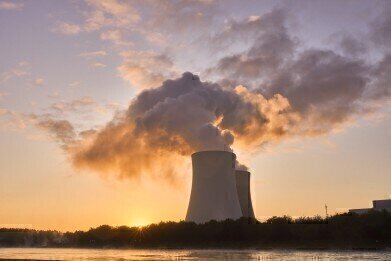Gas Detection
What Is the Impact of Amine Emissions?
Aug 02 2022
With ever greater focus on the carbon footprint of businesses operating in a wide variety of sectors, owners have been looking at ways to curb their emissions. Carbon capture and storage (CCS) has emerged as a leading technology in achieving this goal, with amine-based solvents one of the most popular means of doing so.
This is due to the fact that amine systems have proven themselves to be very effective in removing carbon dioxide (CO2) from flue gas streams, of which the greenhouse gas can comprise up to 20%. The systems are already a common facet of gas sweetening processes, while the fact that they can operate at normal temperatures and pressures reduces the costs and risks involved in their deployment.
However, amines and amine degradation products can leach into the environment during the process. This can occur as a result of acid reactions, evaporation, oxidation and thermal degradation, with the amine escaping via exhaust gas flue streams, leaking from various component parts of the system or else infiltrating the wastewater effluent. So what are the impact of these emissions?
A fledgling technology
The profile of global warming and climate change have grown significantly in recent decades, with greenhouse gases such as CO2 shouldering much of the blame for these problematic phenomena. CCS has emerged as a promising means of mitigating the emissions surrounding energy generation, manufacturing, metalworks and other industrial processes.
However, the use of CCS in general and amine-based solvents in particular is still a fledgling technology. As such, there has been little research conducted into the specific volumes of emissions associated with the practice to date and although gas purity analysis is a major area of focus in CCS operations, there are no specific regulations governing amine concentrations in flue streams or wastewater effluent.
The dangers of degradation
Aside from the emissions of amines themselves, the chemical compounds which are produced when they are released into the atmosphere could prove to be an even greater concern. In particular, research has been conducted into nitramine and nitrosamine, which are suspected of having poor biodegradability, high ecotoxicity and high mobility.
As a result, these substances are believed to pose the greatest risk to human and environmental health, with the long-term effects of exposure to nitrosamines in drinking water among the most dangerous. Fortunately, current concentrations of amines and amine degradation products in soil, water and air samples have proven to be extremely low and pose a modest to negligible risk as a result. However, their ability to persist and bioaccumulate in the atmosphere means that they cannot be classified as harmless.
More work ahead
While studies conducted to date have shone some light on the potential impact of amine emissions in the natural world, there remains much we do not know about these substances. A lack of regulatory control means that plants do not often collect data on concentrations and emissions of amine from their flue and effluent streams.
As such, there is a significant amount of research that is still required in order to fully comprehend the scale of emissions at industrial sites, as well as the ramifications of these emissions entering the natural world. Some parties have suggested that amine-based CCS systems should not be pursued further until these knowledge gaps have been filled. Meanwhile, others have highlighted how it is important to understand how amines and amine degradation products could react with other contaminants in the atmosphere before proceeding further.
Digital Edition
AET 28.3 September 2024
September 2024
Business News - ENVEA announces acquisition of APAQ Group - SICK and Endress+Hauser sign strategic partnership - Efforts to curb gas flaring intensify amid environmental concerns Air Monito...
View all digital editions
Events
WEATHER • CLIMATE • WATER / EARTH OBSERVATIONS / GREEN ECONOMY
Oct 29 2024 St. Petersburg, Russia
Oct 30 2024 Hong Kong
Nov 05 2024 Toronto, Canada
Nov 05 2024 Rimini, Italy
Nov 06 2024 Ho Chi Minh City, Vietnam



















